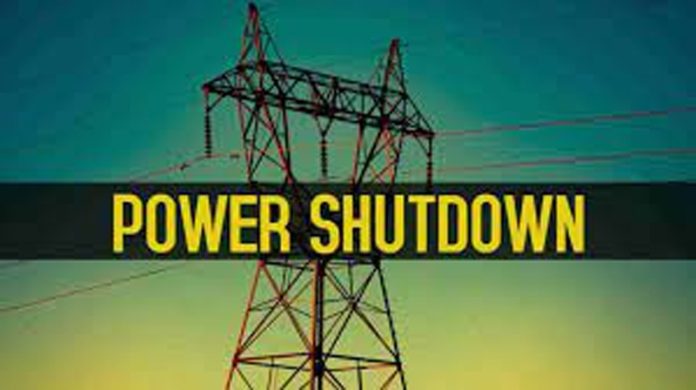
Looking to address years of northbound and southbound commuter traffic at a standstill at times on Highway 14, transportation officials are expected to hold meetings in the coming months to hear how the public would like to address the gridlock. The problem – congestion – is not up for debate. But with dozens of off-ramps on the road officially known as State Route 14 between Interstate 5 and State Route 138, or Pearblossom Highway, there are lots of opportunities for improvement.
A “Request Approval of Project to Proceed to the Project Approval and Environmental Document Phase” for Highway 14 authorized by Tony Tavares, who was a district director for Caltrans in August 2021 and later named director of the state’s Department of Transportation the following June, looks at three possibilities. Two would have a direct impact for southbound drivers, who face worse congestion based on Caltrans data, and one would be for the northbound side. The Los Angeles County Metropolitan Transportation Authority is working with Caltrans on improvements to Highway 14, which is important to national strategic defense and emergency capabilities as part of the Strategic Highway Corridor Network, according to Caltrans — as well as being vital to east-side commuters in the Antelope and Santa Clarita valleys.

The outreach for the plan, which hit an unexpected snag last week , causing it to be postponed until further notice , appears to be centered around three suggestions deemed as priorities, based on documents obtained by The Signal. The idea is to eliminate bottleneck locations and improve safety, according to Patrick Chandler, speaking on behalf of Metro, referring to the project’s goal. He wrote that 12 of the 17 segments studied for the SR-14 North Los Angeles County Safety & Mobility Improvements Project had higher-than-average collision rates.
Councilwoman Marsha McLean, who was disappointed the outreach scheduled last week for the much-needed work was delayed, said she was looking forward to hearing what residents had to say about the road, as well as what could be done. “I would like to see the State Route 14 freeway be brought up to public safety standards, and if that means adding an extra lane, which could be a truck lane, or any other necessary lane to ensure the safety of the commuters that use that freeway every single day,” she said Tuesday in a phone interview. Studied suggestions Transportation agencies have been studying the issue for years, with the first reports in 2019 hinting at congestion problems, and recent studies showing the cost estimates to be around $170 million to fix them.
The 2021 report looked at three projects for a build-out scenario on Highway 14. On the southbound side, Caltrans is proposing to add a lane on (Highway 14) from “Newhall Avenue Undercrossing (PM 27.0)” to the “Via Princessa Undercrossing (PM 30.
772),” which would be nearly 4 miles; and from Sand Canyon Road (PM 33.423) to Agua Dulce Canyon Road (PM 40.034), which would be a little over 6.
5 miles. The north side, from the “Newhall Avenue Undercrossing” to Golden Valley Road, would receive a lane, a distance of about 2.675 miles, according to the preliminary plans.
The congestion data released by Caltrans in conjunction with the study demonstrates why southbound commuters are getting two lane additions while those heading north get one: The existing level of service for the northbound traffic near Via Princessa was reported at 53 mph; while the southbound traffic in the same area is moving at 24 mph. There are three lanes for both segments but the southbound side reports a vehicle density that’s twice that of the north. There were two alternatives looked at: a no-build and a build.
And without the build, the situation looks grim for the commute. “Several segments of this roadway are currently operating at near or over-capacity with a Level of Service ‘E’ or ‘F’ during peak periods,” according to planning documents, with F representing the lowest level, which would essentially be gridlock. Without the build, the southbound traffic would essentially be at gridlock at almost every exit in a little over a dozen years, according to the study.
“With the expected increase in traffic demand due to ambient growth and/or planned developments within the neighboring communities and beyond, the no-build alternative would render large segments of the route to operate at an unacceptable level of service by the 2040 design year; further, through diversion, poor operational performance of this route would also negatively influence other roadway segments that are parallel and outside the project limits.” There’s been talk of additional plans to address the traffic congestion, but it doesn’t appear to be in the budget for this round of project funding, according to the 2021 project study report for the work. Chandler indicated in a previous statement that the current status of the project is funded through the environmental study portion, which is part of the normal process.
“The North County Subregion has identified Measure R and M funds from their subregional funds for the environmental phase,” he wrote in an email earlier this month. “The purpose of this public scoping is to listen to and capture input and feedback from public and stakeholders regarding potential social, economic and environmental issues related to the project,” Chandler said. “Public scoping is an important step in the preparation of the draft environmental document.
Metro and Caltrans look forward to public input and feedback.” Another alternative that was cut from the southbound side due to budget priorities was adding a lane on the southbound side from Pearblossom Highway to the Escondido Canyon Road overcrossing. On the northbound side, planners decided to not study a proposal that would have added a lane from the Sand Canyon Road overcrossing to Soledad Canyon Road and another one from Puritan Mine Road undercrossing to the Sierra Highway overcrossing in the AV.
.










